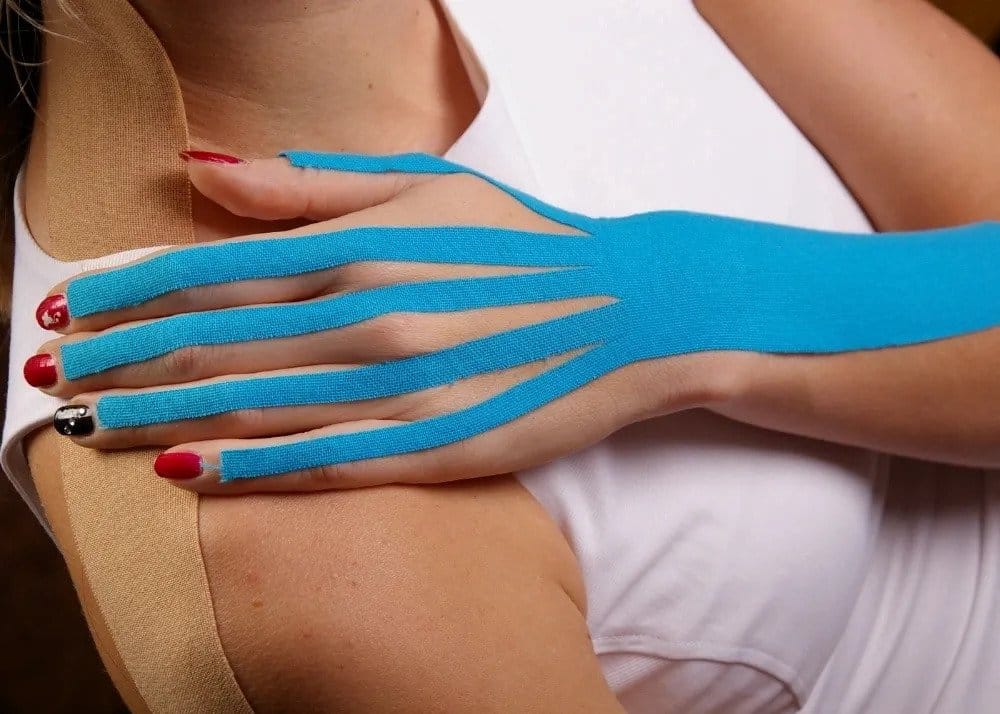
What is proprioception?
Enhancing Body Awareness and Injury Prevention through Proprioception Training Proprioception, often referred to as body awareness, plays a crucial role in our ability to sense

Today, there are more than 50 brands of kinesiology tape on the market, but the original product, Kinesio tape or Kinesio Tex Tape, was developed in the late 1970s by Dr. Kenzo Kase, a Japanese chiropractor who wanted a tape that provided support but didn’t limit movement the way traditional athletic tapes do.
If you’ve watched a volleyball game or competitive bicycle race, you’ve probably seen it: strips of colourful tape splayed in patterns across shoulders, knees, backs, and abs. That’s kinesiology tape: a therapeutic tape that’s applied strategically to the body to provide support, lessen pain, reduce swelling, and improve performance.
Enthusiasts report success achieving these aims, but so far, there needs to be more research to say with certainty what taping can and cannot do.
Here’s what we know about how physical and sports therapists use it, its benefits, tips and what to know.
Kinesiology tape is really stretchy.
Kase created Kinesio tape with a proprietary blend of cotton and nylon. It’s designed to mimic the skin’s elasticity so you can use your full range of motion. The tape’s medical-grade adhesive is also water-resistant and strong enough to stay on for three to five days, even while you work out or take showers.
When the tape is applied to your body, it recoils slightly, gently lifting your skin. It is believed that this helps to create a microscopic space between your skin and the tissues underneath it.
One small study with 32 participants showed that when kinesiology tape was applied over the knee, it increased the space in the knee joint. A similar study showed kinesiology tape also increased the space in the shoulder joint. Even though the increase in space is slight, it helps reduce the chance of joint irritation.
Some physical therapists think the tape changes the information your sensory nervous system is sending about pain and compression in your body.
Dr Megann Schooley board-certified clinical specialist in sports physical therapy and certified strength and conditioning specialist, explains it this way:
“All of your tissues — skin, connective tissue, fascia, muscles — contain sensory receptors that feel pain, temperature, and touch. Those receptors all contribute to proprioception—your brain’s sense of where your body is and what it’s doing. Kinesiology taping creates a lift that unloads the underlying tissues. Decompressing those tissues can change the signals going to the brain. When the brain receives a different signal, it’s going to respond differently,” Schooley says.
Trigger points are a good example. Physical therapists have used kinesiology tape to lift the skin over these tense, knotted muscles. When the area is decompressed, pain receptors send a new signal to the brain, and tension in the trigger point decreases.
A 2015 study showed that trigger point pain was reduced and flexibility increased for people when kinesiology tape and manual pressure were used together.Trusted Source
If you’ve been injured, kinesiology tape might help improve circulation and reduce swelling in the area where you’re hurt.
A 2017 study showed that kinesiology taping can improve blood flow in the skin.Trusted Source It may also improve circulation of lymphatic fluids. Lymphatic fluid is mostly water, but it also contains proteins, bacteria, and other chemicals. The lymphatic system is the way your body regulates swelling and fluid buildup.
The theory is that when kinesiology tape is applied, it creates extra subcutaneous space, which changes the pressure gradient in the area underneath your skin. That change in pressure enhances the flow of lymphatic fluid.
Studies have had mixed results. In two recent studies, kinesiology tape reduced fluid buildup in women who underwent breast cancer treatment and people who had total knee replacements.Trusted SourceTrusted Source
Changing the flow of lymphatic fluid could help bruises heal faster. Although there are few studies to confirm this effect, anecdotally some people report that when they’ve removed tape from bruised body parts, the areas under the tape were a different colour than the un-taped areas.
Physical therapists sometimes use kinesiology taping as one part of an overall treatment plan for people who’ve been injured. The American Physical Therapy Association reports that kinesiology taping is most effective when it’s used in conjunction with other treatments like manual therapy.Trusted Source
“We use kinesiology taping to mitigate pain and swelling,” Schooley says, “but it’s always used as an adjunct to what we’re trying to accomplish.”
Kinesiology tape is also used to add extra support to muscles or joints that need it. If you have patellofemoral stress syndrome, IT band friction syndrome, or Achilles tendonitis, kinesiology taping might help you.
Unlike white medical or athletic tape, kinesiology tape lets you move normally. In fact, some studies show that it can enhance movement and endurance. Studies on athletes have shown that when kinesiology tape is used on fatigued muscles, performance improves.
Kinesiology tape can help re-train muscles that have lost function or that have gotten used to an unhealthy way of working.
For example, kinesiology taping can be used to correct posture in your head and neck.Trusted Source And a 2017 study supports using it to help stroke patients improve the way they walk.Trusted Source
Physical therapists think this may be because having the strange sensation of tape on your skin can make you more aware of how you’re standing or moving.
Some athletes use kinesiology taping to help them achieve peak performance and protect against injury when they’re competing in special events.
“A lot of runners use this tape every time they run a marathon,” Schooley says. “We sometimes place the tape along the glute as a way of ‘waking up’ the muscle and reminding it to keep working.”
Although you should never use kinesiology tape on an open wound, there is some scientific evidence to suggest that kinesiology tape can improve the long-term appearance of scars after surgery or injury.Trusted Source This is definitely a treatment you should discuss with a doctor first.
The answer for some people is: yes. But we need more research — what exists currently is inconsistent. Some studies indicate no difference in outcomes between kinesiology tape and placebos or “sham taping.”
Some studies show minimal or moderate gains.
Many studies indicate that kinesiology taping is most effective when used together with conventional treatment methods.
There are some circumstances in which kinesiology tape should not be used. They include the following.
Source: https://www.healthline.com/health/kinesiology-tape#uses

Enhancing Body Awareness and Injury Prevention through Proprioception Training Proprioception, often referred to as body awareness, plays a crucial role in our ability to sense

Hi, I am Andi and I am holistic rehabilitation and movement coach/trainer. I help clients to achieve a healthy, fit body and pain-free lifestyle. Rehabilitation

The vagus nerve is one of 12 cranial nerves in the body. It’s responsible for various bodily functions, including digestion, heart rate, and breathing. Some

The menopause transition is a slippery slope for muscle loss. Here are some key reasons to lift weights to make and maintain as much muscle

Walking with weights can involve either wearable weights or hand weights such as dumbbells. Learn about the different types of weights you can add to

Dear clients ask almost every day how they “need” to sleep. Is there any golden rule for this too!? But there isn’t. Everyone has to